Halifax is the capital of Nova Scotia. Halifax has one of the world’s largest harbors. The harbor serves as Canada’s main naval base and is the country’s busiest east coast port. It remains open in winter when ice closes most other eastern Canadian ports. In 1996, the cities of Halifax and Dartmouth, the town of Bedford, and the rest of Halifax County were combined to form the Halifax Regional Municipality, with a single regional government. The 2021 Canadian census reported that the population of the Halifax Regional Municipality was 439,819.
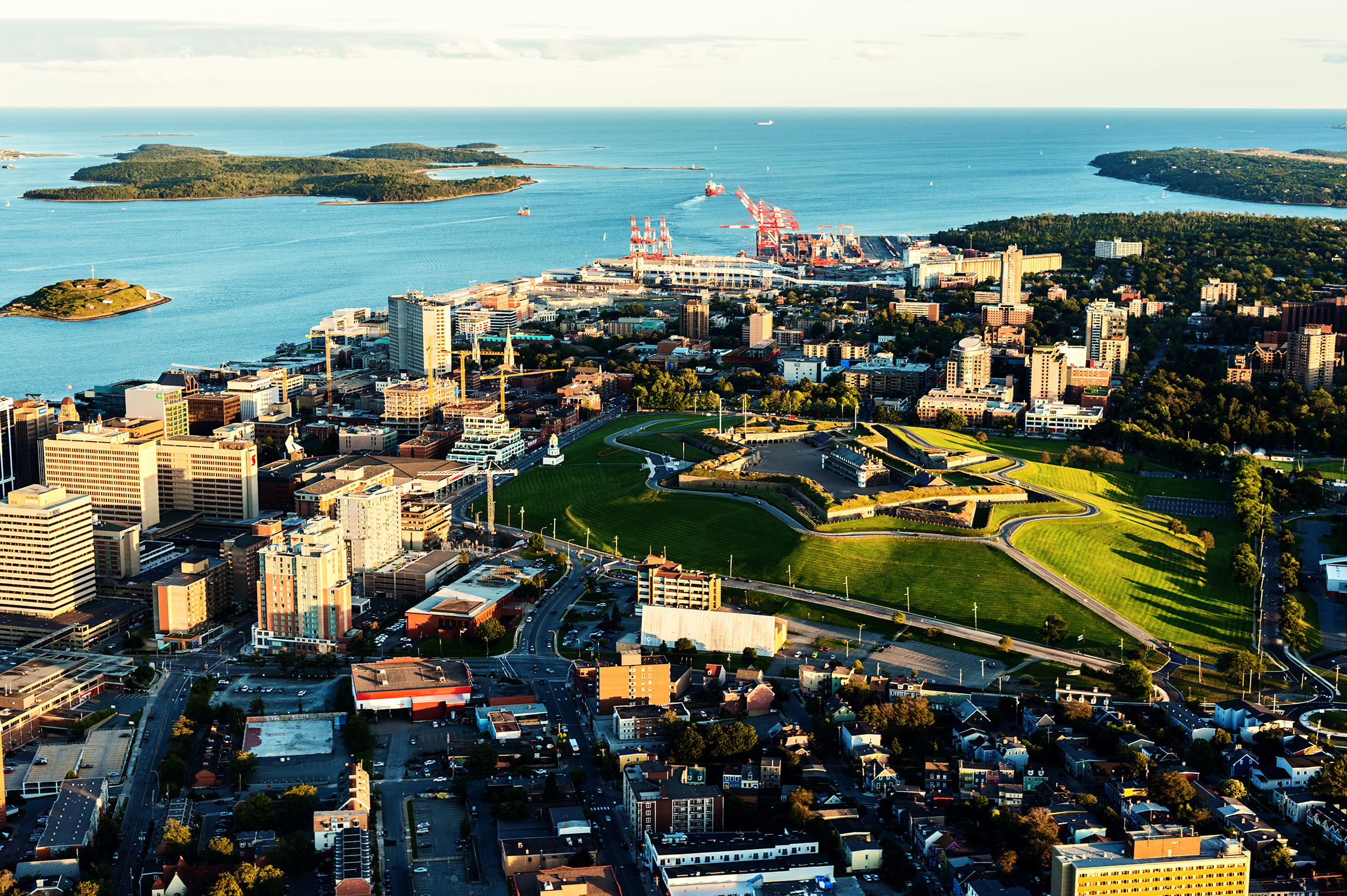
British settlers founded the town of Halifax in 1749. Britain built a military base there because of its growing struggle with France for control of North America. France had forces stationed at nearby Louisbourg (see Louisbourg). Halifax was named for George Dunk, the Earl of Halifax, who headed the government board that supervised the colony. Halifax is one of Canada’s most historic locations. Canada’s first representative government, the General Assembly of Nova Scotia, was established in Halifax in 1758. The first Protestant church in Canada was built there in 1749, and Canada’s first newspaper appeared there in 1752.
Description.
The Halifax Regional Municipality covers 2,114 square miles (5,476 square kilometers) surrounding Halifax Harbour. It includes the communities of Halifax, Dartmouth, and Bedford, as well as the area surrounding those communities. The community of Dartmouth lies north of the harbor. Most of the community of Halifax is on a peninsula between the harbor and an inlet called the North West Arm. Bedford is at the western end of the harbor. Two ferries and two suspension bridges across the harbor link the communities of Halifax, Dartmouth, and Bedford.
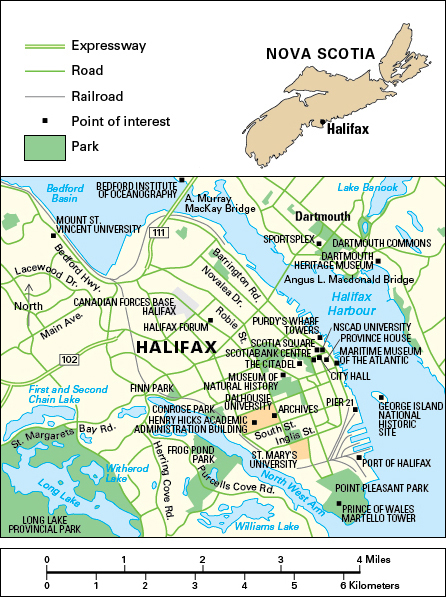
Province House, Canada’s oldest parliament building, stands in the downtown area of the community of Halifax. This building, the home of the Nova Scotia legislature, was completed in 1818. The Citadel, a stone fortress built from 1828 to 1856, overlooks the downtown area from a hilltop. York Redoubt, a defense post on the North West Arm, dates from 1793. The Prince of Wales Martello Tower, a fortification built in 1796, stands in Point Pleasant Park.
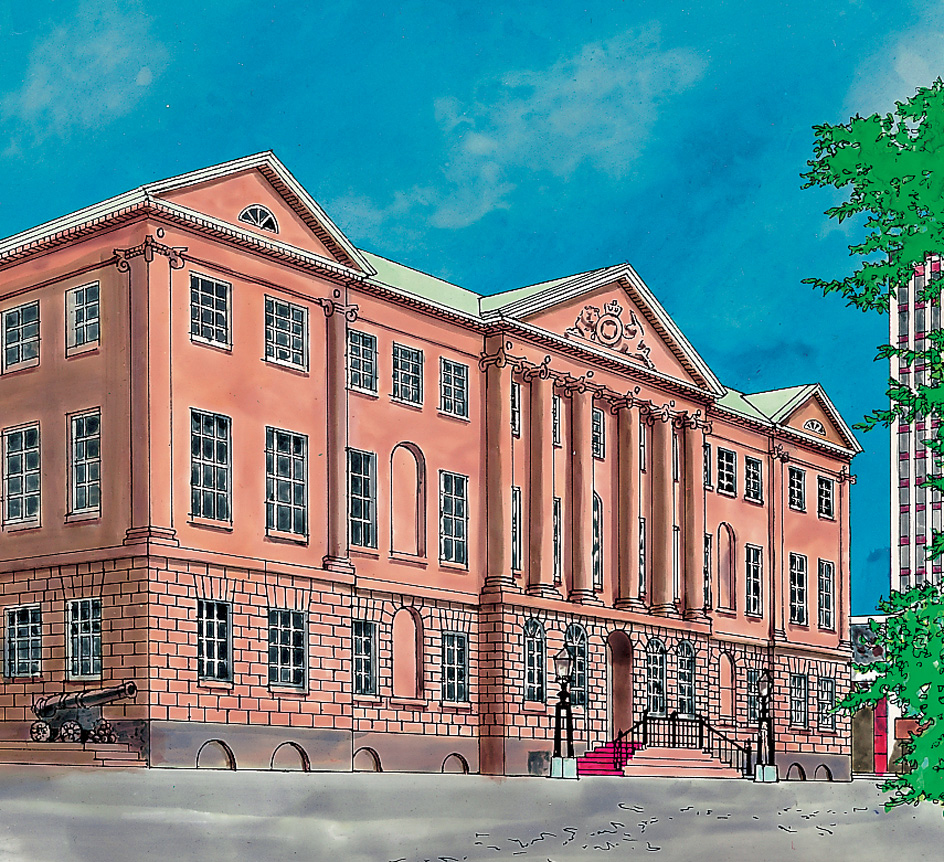
The economy of Halifax depends heavily on Canadian Forces Base (CFB) Halifax, a naval base. Large numbers of civilians and armed forces members work at the base. The Port of Halifax handles millions of tons of cargo annually. Halifax Stanfield International Airport handles domestic and international flights.
Dozens of manufacturing plants operate in the Halifax area. Food processing and oil refining are important industries. Halifax also has growing aerospace, computer software, medical research, and telecommunications industries. Hospitals in Halifax form the largest Canadian medical center east of Quebec City.
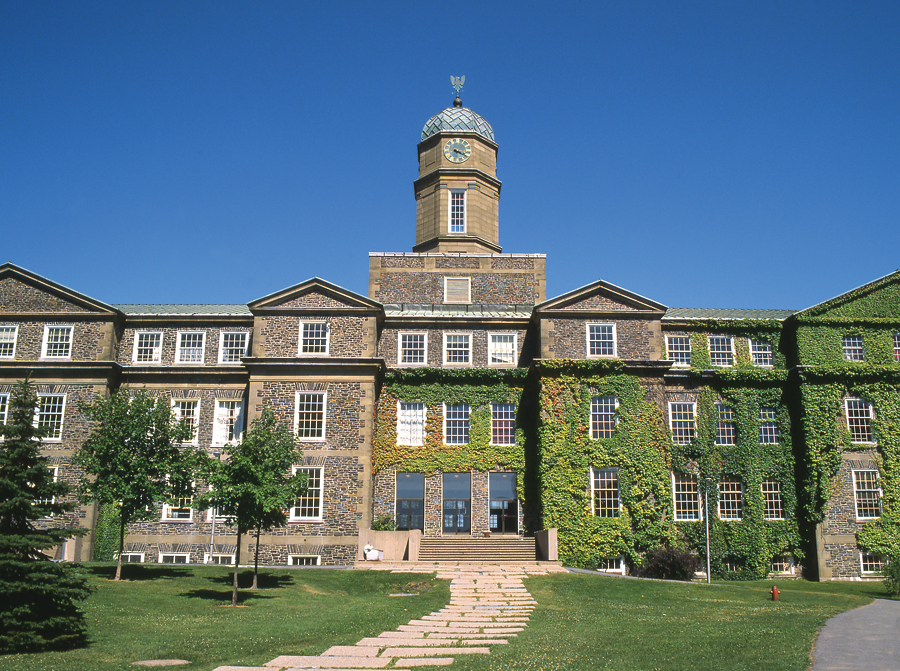
The Halifax region’s institutions of higher education include Dalhousie University, Mount St. Vincent University, NSCAD University (Nova Scotia College of Art and Design), and St. Mary’s University. The Bedford Institute of Oceanography and other research organizations in the area make up one of the largest centers of ocean study in the world.
The Dalhousie University Arts Centre offers art exhibits, concerts, and plays. Halifax has a resident theater group, a symphony orchestra, and a number of art galleries. Museums in the region include the Black Cultural Centre for Nova Scotia, the Maritime Museum of the Atlantic, the Nova Scotia Museum of Natural History, and the Nova Scotia Archives. The Canadian Museum of Immigration at Pier 21 is housed in a former immigration-processing center on the waterfront.
Government and history.
The Halifax Regional Municipality has a council-manager government. Voters elect a mayor and 16 councilors to the regional council. The council appoints a chief administrative officer to be the administrative head of the government. The region gets most of its revenue from property taxes.

Indigenous (native) Mi’kmaq people lived in what is now the Halifax area before white explorers arrived there. In 1749, Britain sent Governor Edward Cornwallis and about 2,500 settlers to establish a fort and town. The same year, Halifax became the capital of the colony of Nova Scotia. Cornwallis later became a controversial figure because of his treatment of the Mi’kmaq.
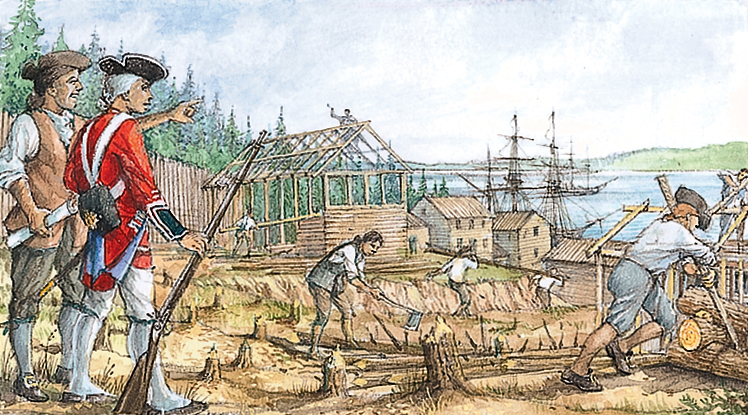
Halifax served as a major British naval base during the American Revolution (1775-1783) and the War of 1812 (1812-1815). Military officers governed the city until 1841. That year, Joseph Howe, a newspaper editor and statesman, led a campaign that brought the city incorporation and self-government. Halifax had 20,749 people in 1851. By 1901, its population had reached 40,832.

In 1917, during World War I, a French ammunition ship exploded in the city’s harbor. This disaster killed about 2,000 people and wrecked much of Halifax. During World War II (1939-1945), Halifax became the chief North American base for Allied ships carrying food and war supplies to Europe.
During the 1960’s and 1970’s, downtown Halifax underwent redevelopment with the construction of the Scotia Square commercial center and a nearby sports complex and convention center. The Historic Properties and Purdy’s Wharf developments transformed the waterfront with a mix of restored warehouses dating from the 1800’s and modern offices, condominiums, and hotels. The waterfront was also designed to house the Bluenose II, a copy of the racing schooner represented on Canada’s 10-cent coin.
Port operations boomed with the opening of the Halifax Container Terminal in 1970 and the Fairview Cove terminal in 1981. Cranes at the terminals quickly transfer large containers of cargo between ships and trains. This procedure makes shipment via Halifax one of the fastest freight routes between Europe and the central regions of Canada and the United States.
In 1971, drillers struck small oil deposits off Sable Island near the Nova Scotia coast. Halifax became a center of oil industry activity.
In 1994, Nova Scotia passed legislation to create the Halifax Regional Municipality, which would make all of Halifax County, including Halifax, Dartmouth, and Bedford, a regional municipality with a single regional government. A mayor and council were elected in December 1995, and the Halifax Regional Municipality came into being on April 1, 1996.
See also Halifax explosion. For the monthly weather in Halifax, see Nova Scotia (Climate).
